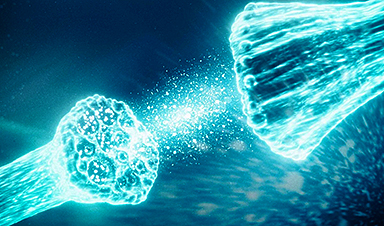In the past four years, the pathogen responsible for Coronavirus Disease 2019 (COVID-19), SARS-CoV-2, has infected more than 770 million people and caused more than 6.9 million deaths worldwide. The severe impact of SARS-CoV-2 is often attributed to its ability to suppress the interferon (IFN) response while simultaneously inducing the production of various cytokines.
To address this question, a research team led by Prof. Xue Yuanchao from the Institute of Biophysics of the Chinese Academy of Sciences, together with their collaborators, has profiled the SARS-CoV-2-to-host RNA–RNA interactions.
This study, published in Molecular Cell on Dec. 20, unveils for the first time the molecular intricacies of how SARS-CoV-2 RNA interacts with and stabilizes host mRNAs, ultimately triggering the cytokine storm.
Using state-of-the-art RIC-seq technology, the researchers comprehensively mapped the SARS-CoV-2-to-host RNA–RNA interactions in infected cells and lung tissues obtained from two deceased COVID-19 patients. Through mass spectrometry analysis of the RNA pull-down assay, they discovered that SARS-CoV-2 RNA forms base pairs with the 3′ UTR of host mRNAs and recruits the RNA-binding protein YBX3 to stabilize host mRNAs in A549-ACE2 and Vero cells. Importantly, interference with the SARS-CoV-2-to-host RNA–RNA interaction or the knockdown of YBX3 significantly reduced host mRNA stability and hindered SARS-CoV-2 replication.
Among the stabilized host mRNAs, NFKBIZ emerged as a key factor in promoting cytokine production and suppressing IFN responses, potentially contributing to the cytokine storm. Knocking down NFKBIZ resulted in a significant decrease in the expression levels of proinflammatory factors such as IL-6, IL-8, and CXCL2, while the levels of type I/III IFNs, including IFNB1, IFNL1, and IFNL2, increased. These findings suggest that SARS-CoV-2 may induce a cytokine storm via stabilized host mRNAs, with NFKBIZ playing a pivotal role.
This research not only sheds light on the regulatory role of RNA–RNA interactions in the immunopathogenesis of RNA viruses such as SARS-CoV-2, but also contributes to the development of novel strategies to combat COVID-19.
The results open new avenues for targeted interventions aimed at disrupting the specific molecular mechanisms responsible for the cytokine storm associated with severe cases of COVID-19.
More information: Hailian Zhao et al, SARS-CoV-2 RNA stabilizes host mRNAs to elicit immunopathogenesis, Molecular Cell (2023). DOI: 10.1016/j.molcel.2023.11.032
News
Scientists Unlock a New Way to Hear the Brain’s Hidden Language
Scientists can finally hear the brain’s quietest messages—unlocking the hidden code behind how neurons think, decide, and remember. Scientists have created a new protein that can capture the incoming chemical signals received by brain [...]
Does being infected or vaccinated first influence COVID-19 immunity?
A new study analyzing the immune response to COVID-19 in a Catalan cohort of health workers sheds light on an important question: does it matter whether a person was first infected or first vaccinated? [...]
We May Never Know if AI Is Conscious, Says Cambridge Philosopher
As claims about conscious AI grow louder, a Cambridge philosopher argues that we lack the evidence to know whether machines can truly be conscious, let alone morally significant. A philosopher at the University of [...]
AI Helped Scientists Stop a Virus With One Tiny Change
Using AI, researchers identified one tiny molecular interaction that viruses need to infect cells. Disrupting it stopped the virus before infection could begin. Washington State University scientists have uncovered a method to interfere with a key [...]
Deadly Hospital Fungus May Finally Have a Weakness
A deadly, drug-resistant hospital fungus may finally have a weakness—and scientists think they’ve found it. Researchers have identified a genetic process that could open the door to new treatments for a dangerous fungal infection [...]
Fever-Proof Bird Flu Variant Could Fuel the Next Pandemic
Bird flu viruses present a significant risk to humans because they can continue replicating at temperatures higher than a typical fever. Fever is one of the body’s main tools for slowing or stopping viral [...]
What could the future of nanoscience look like?
Society has a lot to thank for nanoscience. From improved health monitoring to reducing the size of electronics, scientists’ ability to delve deeper and better understand chemistry at the nanoscale has opened up numerous [...]
Scientists Melt Cancer’s Hidden “Power Hubs” and Stop Tumor Growth
Researchers discovered that in a rare kidney cancer, RNA builds droplet-like hubs that act as growth control centers inside tumor cells. By engineering a molecular switch to dissolve these hubs, they were able to halt cancer [...]
Platelet-inspired nanoparticles could improve treatment of inflammatory diseases
Scientists have developed platelet-inspired nanoparticles that deliver anti-inflammatory drugs directly to brain-computer interface implants, doubling their effectiveness. Scientists have found a way to improve the performance of brain-computer interface (BCI) electrodes by delivering anti-inflammatory drugs directly [...]
After 150 years, a new chapter in cancer therapy is finally beginning
For decades, researchers have been looking for ways to destroy cancer cells in a targeted manner without further weakening the body. But for many patients whose immune system is severely impaired by chemotherapy or radiation, [...]
Older chemical libraries show promise for fighting resistant strains of COVID-19 virus
SARS‑CoV‑2, the virus that causes COVID-19, continues to mutate, with some newer strains becoming less responsive to current antiviral treatments like Paxlovid. Now, University of California San Diego scientists and an international team of [...]
Lower doses of immunotherapy for skin cancer give better results, study suggests
According to a new study, lower doses of approved immunotherapy for malignant melanoma can give better results against tumors, while reducing side effects. This is reported by researchers at Karolinska Institutet in the Journal of the National [...]
Researchers highlight five pathways through which microplastics can harm the brain
Microplastics could be fueling neurodegenerative diseases like Alzheimer's and Parkinson's, with a new study highlighting five ways microplastics can trigger inflammation and damage in the brain. More than 57 million people live with dementia, [...]
Tiny Metal Nanodots Obliterate Cancer Cells While Largely Sparing Healthy Tissue
Scientists have developed tiny metal-oxide particles that push cancer cells past their stress limits while sparing healthy tissue. An international team led by RMIT University has developed tiny particles called nanodots, crafted from a metallic compound, [...]
Gold Nanoclusters Could Supercharge Quantum Computers
Researchers found that gold “super atoms” can behave like the atoms in top-tier quantum systems—only far easier to scale. These tiny clusters can be customized at the molecular level, offering a powerful, tunable foundation [...]
A single shot of HPV vaccine may be enough to fight cervical cancer, study finds
WASHINGTON -- A single HPV vaccination appears just as effective as two doses at preventing the viral infection that causes cervical cancer, researchers reported Wednesday. HPV, or human papillomavirus, is very common and spread [...]





















